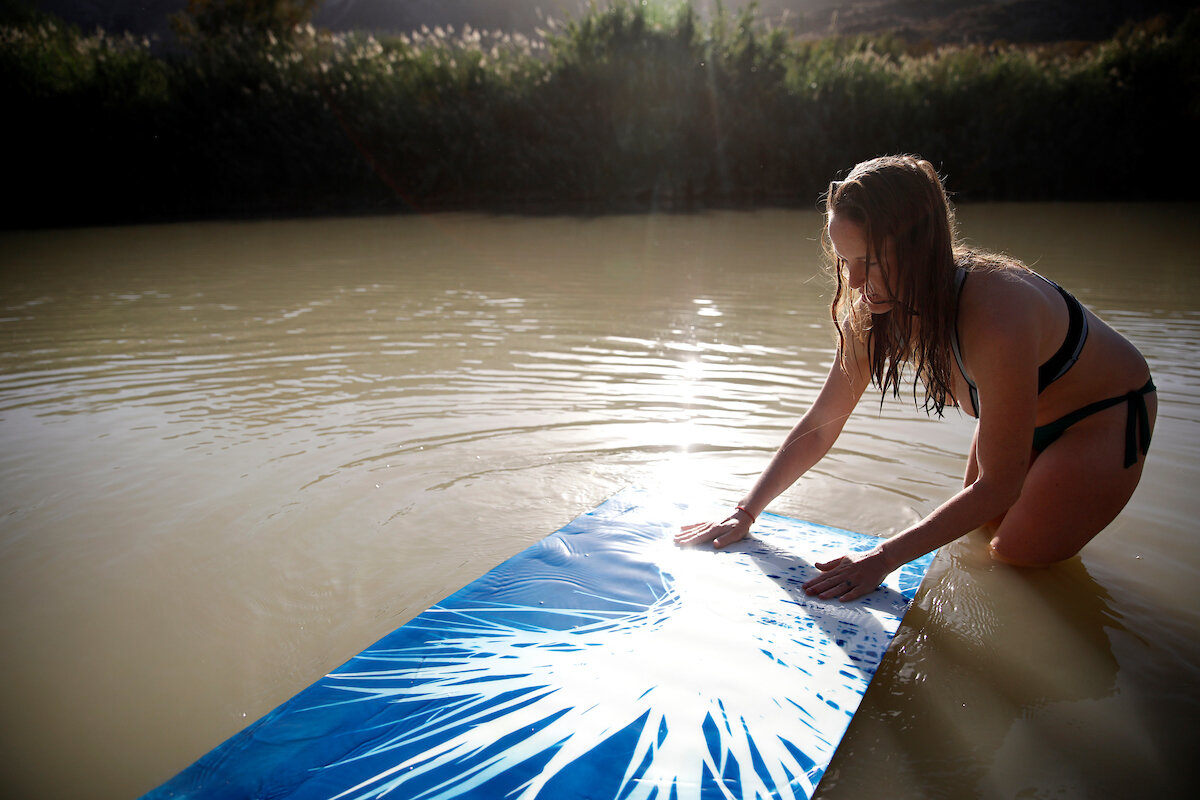






Even though I'm a photographer, too, I knew shockingly little about cyanotypes until I met Sara. Now I know this photographic process was created in 1841, and at first, it was used exclusively to reprint technical drawings: blueprints. Sara was drawn to the cyanotype process three years ago because of the full-body effort it takes to make a large print, the non-toxic nature of the processing, the idea of creating art that is based on nature, and that beautiful blue hue that results.
The day I spent with her, we drove separately from Marfa, TX, down to Big Bend State Park. Along the way, Sara would periodically signal that we should pull over, then come running over to my car and tell me she wanted to work with a specific plant or tree she’d seen. It's funny, the light that makes it possible for her to create an exposure is the exact kind of light that's rough on a portrait photographer. So I didn't get that many photos of her process. Also, I have to admit, I was somewhat mesmerized. I've never seen anything like what she does.
After getting three exposures, we drove farther to an access point along the Rio Grande for her to process the images. This is where it comes in handy that the "chemicals" are non-toxic when combined. She waded into the river, got acclimated to the water temperature, and then grabbed the first print to plunge into the water to develop.
Sara is from Belgium, but she fell in love with California—the land and the ability to live off-grid in stunning and remote places. She had come to a place in her life that made her ready to leave Belgium and also get out of the rat race and live a more self-sustaining lifestyle. (It is a process...) Currently, she's living in Marfa, which is a great source for beautiful, west Texas plants to photograph.
Sara and I got along so well—I wish we had met when I first arrived in Marfa instead of on my way out of town. Check out her Instagram @sara_sjegers and her website. Her prints are beautiful.
